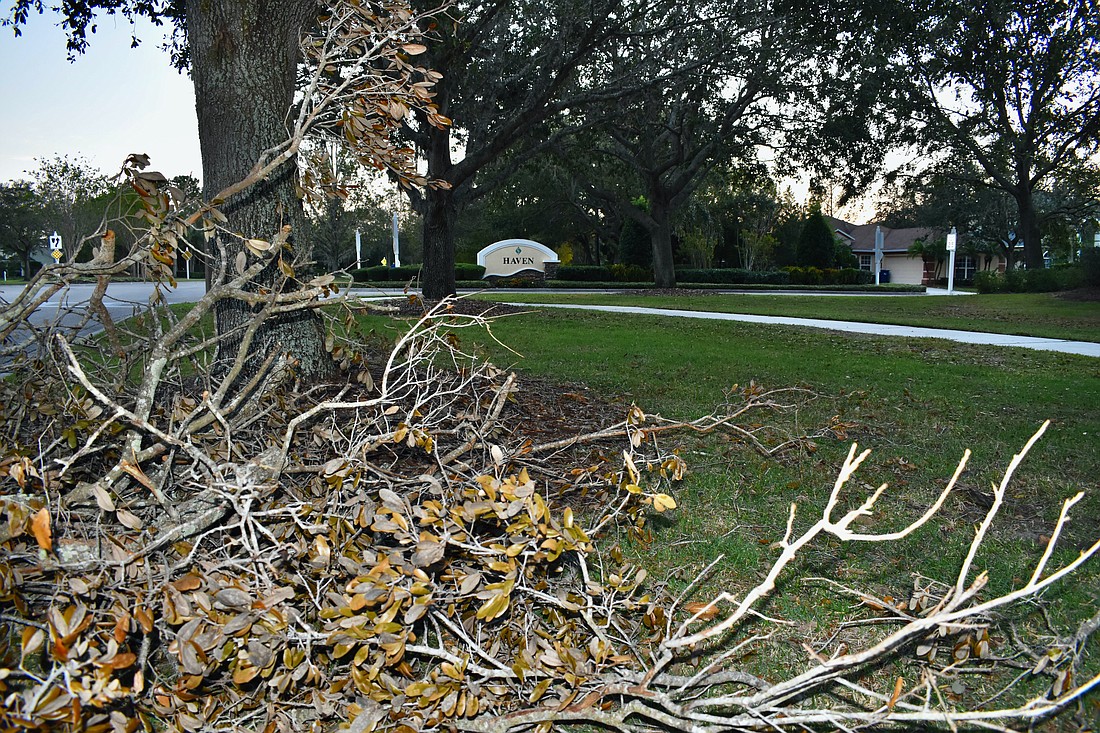- July 10, 2025
-
-
Loading

Loading

Although it has been two months since the impact of Hurricane Ian in Manatee County, some residents have wondered when they will see the last of the storm debris on their curb.
"We don't have top priority,” said District 5 Commissioner Vanessa Baugh, who noted the process has been slowed by the fact many cleanup resources have been working in harder-hit places like Lee County.
However, she also noted the storm was unlike any other that has hit Manatee County in the last 100 years and therefore left lots of debris in its wake.
Manatee County spokesman Bill Logan said the county's cleanup efforts, especially in the Lakewood Ranch, University Park and Myakka City areas, should be complete in December.
Logan sent an email that estimated cleanup costs in the county have now risen past $10 million.
Original estimates of the county needing to pick up 250,000 to 350,000 cubic yards of debris have been low. So far, more than 600,000 cubic yards has been collected.

The scope of the project has extended the time needed to pick up all the debris.
Some residents piled up multiple piles of debris over time so contractors have had to make additional trips to neighborhoods where they already had collected.
Schools were the county's top priority so they could resume normal operations.
Vegetative debris has comprised the largest portion of the material, according to Logan, with some construction and demolition material present as well. The two different types of debris have been collected as best as possible with separate trucks.
According to Logan, the three contractors dealing with the debris since the storm are DRC Emergency Services, Ceres Environmental Services, and Phillips & Jordan.
Due to the volume of debris, the county has consolidated materials at various collection sites that would provide shorter trips so the trucks could empty quickly and get back to curbside removal.
Logan would not say where the consolidation sites are due to the county hoping to avoid residents dumping debris at the sites.
Some of the vegetative material will be used for agricultural purposes, but most will be hauled to a disposal site.
Despite debris in some areas awaiting pickup, residents interviewed by the Observer offered largely positive comments about the county's efforts to clean up after the hurricane.
Edgewater’s Larisa Barreto said everything within her area was picked up “fairly quickly,” within about a week.
Braden Woods’ Zory Tolstov said debris in her area was picked up about a month after the storm, with completion by the beginning of November, and said she felt the county had made a “very impressive” effort.
She said the vegetation-heavy nature of Braden Woods, which includes many tall oak and pine trees, led to substantial amounts of debris in the streets, and what she estimated was hundreds of large trees down.
As soon as the storm had passed, she said, trucks were present in the area picking up debris.
She said the county's efforts have improved since Hurricane Irma in 2017.
“We didn’t have problems (with Hurricane Ian cleanup),” said Greenbrook’s Stacy Moore. “Probably a little delay, but that was expected.”
Arbor Grande’s James Mangianiello said his debris was picked up within two weeks of the storm.
He also said an experience with Hurricane Sandy in his former home in the Rockaway Peninsula in New York in 2012, gave him perspective on the devastation that was possible from a hurricane.
His car ended up underwater, while his apartment complex saw deterioration due to the damage from saltwater, he said.
He also said he felt that Arbor Grande’s drainage system, which provided numerous hills to direct the water, offered an advantage in the neighborhood’s recovery from the storm.
Baugh said despite any annoyances from debris that residents may still face, the impacts of the storm could have been far worse.
"I tell everyone, as long as we have a home and a bed, we are blessed," Baugh said.